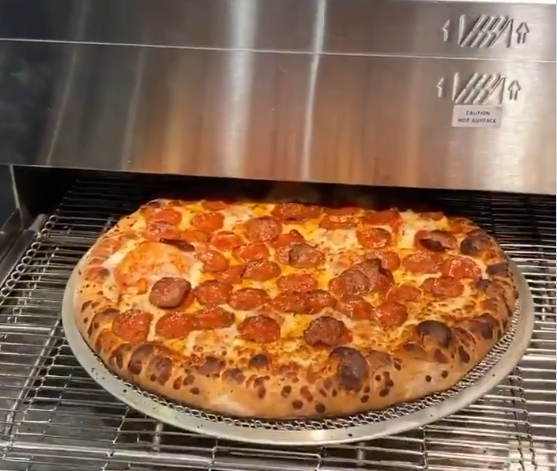The Greatest Minds of My Generation Made This Machine That Makes Gross Pizza
Credit to Author: Aaron Gordon| Date: Mon, 13 Jan 2020 18:33:12 +0000
One of the most discussed demonstrations from CES this year was a machine that makes pizza. Not a machine that makes pizza in your kitchen, which everyone has and is called an oven, but a machine that makes pizza for restaurants, cafeterias, and other places that already make lots of pizza.
But this pizza machine is not designed to make good pizza. It is designed to make bad pizza more efficiently, an innovation we do not need.
The machine in question is made by Picnic, a Seattle-based startup that came out of a three year "stealth mode" late last year to reveal its pizza machine and subsequently raised $5 million to make more bad pizza. But its first public demonstration came at CES. It looked like this:
As advertised, the machine appears capable of making edible pizza. Aside from that, there aren't a lot of good things to say about this pizza.
First and foremost, the end product looks gross:

That is sub-Domino's quality pizza. It might even be worse than Papa John's. And for a machine that is supposed to standardize pizza making, the pepperoni isn't evenly distributed, the one aspect of pizza-making I'd expect a machine to excel at.
Perhaps that is where the AI comes in. A press release about Picnic's demonstration noted "as part of the system’s intelligence, deep learning AI technology continually learns and helps
to meet the changing needs of all types of food service operators, keeping them more competitive and protecting their brands." But, in yet another example of the hollowing of the term "AI," it doesn't seem capable of evenly spacing pepperoni.
On top of that, astute observers will note the machine does not make the dough or the ingredients. Humans must still do that, and anyone who has ever made a pizza or watched anyone make a pizza knows those are the most time-consuming elements of making a pizza.
A human is still needed to move the pizza from the machine assembly line to the conveyor oven. Conveyor ovens, by the way, prioritize the quick cooking of pizza, not the best cooking of pizza, in order for chain restaurants to achieve profitability, not for good pizza restaurants to make tasty pizza, which should be done in deck, coal, or brick ovens.
Which brings us to who this machine is for: places that make gross pizza. As Geekwire noted when it got a sneak peek of Picnic's oven:
Picnic’s platform assembles up to 300 12-inch pizzas per hour, far faster than most restaurants would be able to make the dough, bake and serve the pizzas. That speed comes in handy in places where large numbers of orders come in during a rush, such as at a stadium or in large cafeterias. It’s also compact enough that it could theoretically be installed in a food truck.
I don't know if that 300-per-hour figure is accurate, and I don't really care, because the world does not need more stadium or cafeteria pizza. One of the better trends in food service over the last few decades has been the movement away from mass produced glob and towards foods with natural ingredients made by humans, in particular humans who know how to make good food.
Picnic's "platform" was never intended to make good pizza. It was intended to save labor costs while making more bad pizza. "We learned a lot about food science in the process of developing the system," Picnic CEO Clayton Wood told Geekwire, in a clear confession that his company didn't know how to make food when they set out to start a company that makes food.
"Food is hard," he continued. "It's highly variable." Maybe that's why humans make it.
This article originally appeared on VICE US.